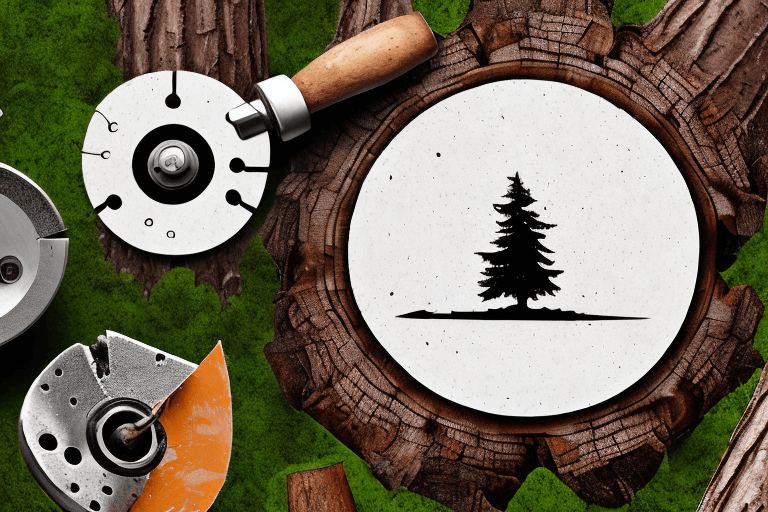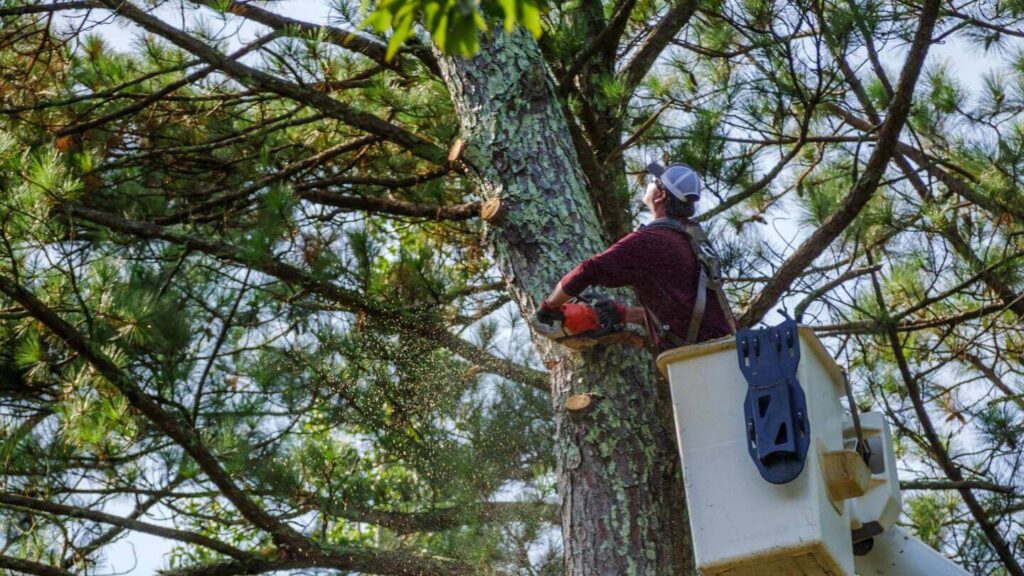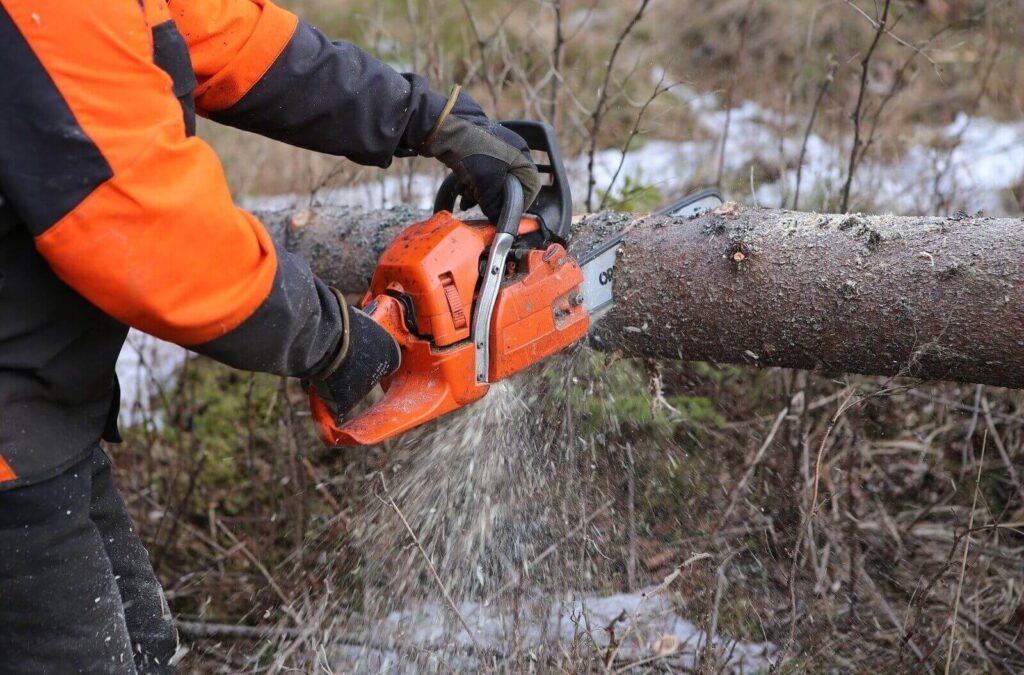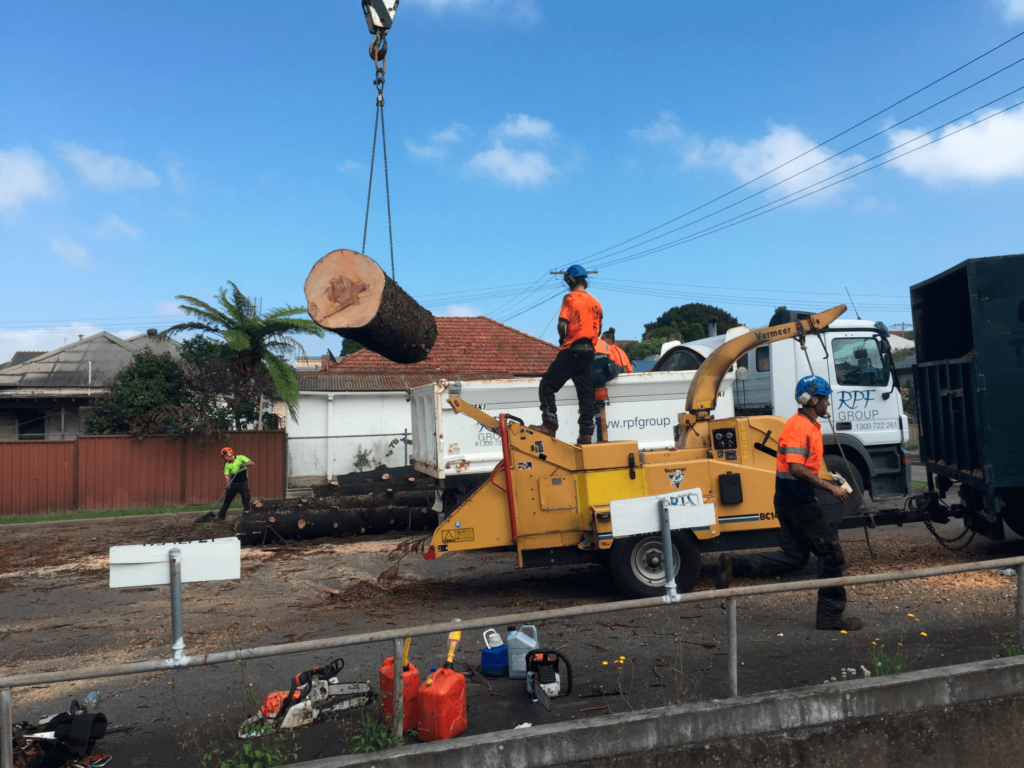Tree stumps can be a nuisance in your yard, taking up valuable space and posing potential safety hazards. If you’ve decided it’s time to remove those unsightly remnants of fallen trees, it’s important to understand the various factors that can influence the cost of tree stump removal services. By considering these factors, you can make an informed decision and ensure that you’re getting the best value for your money.
Understanding the Basics of Tree Stump Removal
Before delving into the cost factors, it’s important to have a clear understanding of what tree root removal entails.
Tree stump removal is not just about getting rid of an eyesore in your yard. It is a process that involves more than just cutting down a tree and leaving the stump behind. When a tree is cut down, the remaining stump can cause a variety of issues if not properly removed.
What is Tree Stump Removal?
Tree stump removal is the process of eliminating the remaining portion of a tree after it has been cut down. This involves extracting the stump from the ground, including its root system, to ensure that there are no traces left behind.
When a tree is cut down, the stump that remains can continue to grow, sending out new shoots and sprouts. These shoots can be a nuisance, as they can disrupt the surrounding landscape and compete with other plants for nutrients and sunlight. Removing the stump completely is essential to prevent any regrowth.
See Also: Creative Ideas for Your Landscape

Why is Tree Stump Removal Necessary?
There are several reasons why tree stump removal is necessary. First and foremost, stumps can be unsightly, affecting the aesthetics of your landscape. Imagine having a beautiful garden or a well-manicured lawn, only to have it marred by an ugly stump sticking out of the ground. Removing the stump will instantly improve the overall appearance of your outdoor space.
But aesthetics is not the only reason to remove a tree stump. Stumps can also pose safety hazards, especially if they’re hidden under overgrown grass or vegetation. They can be a tripping hazard for children playing in the yard or unsuspecting visitors. By removing the stump, you eliminate the risk of accidents and injuries.
Additionally, stumps can attract pests and diseases, potentially spreading them to other plants in your yard. Termites, ants, and other wood-boring insects are known to infest tree stumps, using them as a breeding ground and eventually spreading to nearby structures. Removing the stump eliminates this potential breeding site and reduces the risk of pest infestations.
Furthermore, tree stumps can hinder your landscaping plans. If you want to install a new patio, build a deck, or create a garden bed, a stump in the way can be a major obstacle. Removing the stump allows you to fully utilize your outdoor space and carry out your landscaping projects without any hindrance.
In conclusion, tree stump removal is not just a matter of aesthetics. It is a necessary step to ensure the safety, health, and functionality of your outdoor space. By removing the stump, you eliminate the risk of accidents, prevent the spread of pests and diseases, and open up opportunities for new landscaping projects.
The Process of Tree Stump Removal
Tree stump removal can be a complex process that requires careful planning and execution. Understanding the steps involved can give you a better idea of the costs associated with the service.
Initial Assessment and Planning
Before the removal process begins, a professional arborist will conduct an initial assessment of the stump and its surroundings. This assessment helps determine the best approach for removal, taking into consideration factors such as the size and location of the stump, as well as any potential obstacles that may impact the process.
The arborist will carefully examine the stump to assess its condition and determine the type of tree it came from. This information is crucial in planning the removal process, as different tree species have varying root systems and densities. Understanding the characteristics of the stump will help the arborist decide which tools and techniques to use.
In addition to assessing the stump itself, the arborist will also evaluate the surrounding area. They will look for any underground utilities, such as gas or water lines, that may be near the stump. This information is vital to ensure the safety of both the workers and the property during the removal process.

The Removal Process
The actual removal process involves various techniques, depending on the size and complexity of the stump. It may involve cutting the stump into manageable sections, excavating the roots, and using specialized equipment to extract the remains. This process can be labor-intensive and time-consuming, impacting the overall cost of the service.
If the stump is relatively small and easily accessible, the arborist may choose to use a stump grinder. A stump grinder is a powerful machine that grinds the stump and its roots into small wood chips. This method is efficient and leaves the area ready for replanting or other landscaping purposes.
For larger stumps or stumps located in tight spaces, the arborist may opt for a more manual approach. This could involve using a chainsaw to cut the stump into sections, which can then be lifted and removed using heavy machinery or manual labor. Excavating the roots may also be necessary, especially if the stump is deeply rooted or if the goal is to completely remove all traces of the tree.
During the removal process, the arborist will take precautions to prevent any damage to the surrounding landscape. They may use protective barriers or mats to shield nearby plants, structures, or hardscapes from debris or equipment. Careful attention is paid to ensure that the removal process is carried out safely and efficiently.
Once the stump and its roots have been removed, the arborist will clean up the area, removing any remaining debris and filling in the hole left by the stump. Depending on the client’s preference, the arborist may also offer stump grinding services to further break down any remaining wood chips.
It is important to note that the time required for tree stump removal can vary depending on several factors, including the size and complexity of the stump, the accessibility of the site, and any additional services requested. The arborist will provide an estimate of the time and cost involved after the initial assessment and planning stage.
Factors Influencing the Cost of Tree Stump Removal
Several factors can influence the cost of tree stump removal. Understanding these factors can help you anticipate the expenses involved and make an informed decision.
Size of the Stump
The size of the stump plays a significant role in determining the cost of removal. Larger stumps require more effort and time to remove, resulting in higher costs. Additionally, the diameter and depth of the stump can impact the difficulty of extraction, further influencing the overall price.
When it comes to larger stumps, the removal process becomes more complex. The equipment used needs to be more powerful and specialized to handle the size and weight of the stump. Professional tree stump removal companies often use heavy-duty machinery such as stump grinders or excavators to efficiently remove larger stumps. These machines can grind the stump down to a desired depth, ensuring complete removal.
Furthermore, the depth of the stump can affect the cost of removal. Deeper stumps require more time and effort to extract, as the roots are likely to be more extensive and firmly anchored in the ground. The removal process may involve digging around the stump to expose the roots and using additional tools to cut and remove them.
Location and Accessibility
The location of the stump within your property can affect the cost of removal. Stumps that are situated in hard-to-reach areas or near obstacles such as fences or structures may require additional labor and equipment, thereby increasing the cost. Accessibility constraints can also impact the method used for removal, which can further influence the overall price.
Stumps located in tight spaces or close to structures pose challenges for removal. In such cases, the tree stump removal team may need to carefully maneuver around obstacles to access the stump. This requires extra time and effort, which can result in higher costs.
Additionally, if the stump is located in an area with limited accessibility, specialized equipment may be required. For example, if the stump is in a backyard with no direct access for heavy machinery, the removal team may need to use smaller, more portable equipment or even resort to manual labor. These alternative methods can increase the overall cost of removal.
Species of the Tree
The species of the tree that the stump belongs to can also impact the cost of removal. Certain tree species have more extensive root systems, making them more challenging to remove. Additionally, some tree species may have wood that is harder or denser, requiring specialized equipment or techniques for extraction.
Tree species with extensive root systems, such as oak or pine, often have roots that spread far and deep into the ground. Removing these stumps requires more effort and time, as the roots need to be carefully cut and extracted. The complexity of the root system can increase the cost of removal.
Furthermore, the density and hardness of the wood can affect the removal process. Tree species with dense wood, like maple or cherry, may require specialized equipment or techniques to effectively remove the stump. These additional requirements can add to the overall cost of removal.

Additional Costs in Tree Stump Removal
In addition to the primary costs associated with stump removal, there may be additional expenses to consider.
Root System Removal
If you opt for complete stump removal, including the eradication of the root system, there may be additional charges. Removing the roots can ensure that the tree does not regrow, but it requires more extensive excavation and effort.
Stump Grinding and Disposal
Stump grinding is an alternative approach to removing stumps, whereby the stump is ground down into wood chips. This method is less labor-intensive than complete removal and can be more cost-effective. However, there may be additional charges for the grinding process and the disposal of the wood chips.
Hiring Professionals vs DIY Stump Removal
When it comes to tree stump removal, you have the option to hire a professional service or take the DIY route. Each approach has its pros and cons.
Pros and Cons of Hiring Professionals
Hiring professionals ensures that the job is done safely and efficiently, saving you time and effort. They have the necessary expertise, equipment, and insurance to handle the removal process effectively. However, it is important to consider the cost of professional services, which can vary based on several factors.
Pros and Cons of DIY Stump Removal
DIY stump removal can save you money, but it requires proper knowledge, tools, and physical effort. Additionally, it may take longer to complete the removal process compared to hiring professionals. It’s crucial to evaluate your own capabilities and the complexity of the stump before deciding to take the DIY approach.
Ultimately, the cost of tree stump removal services can vary significantly depending on these factors. By considering the size, location, species, and additional costs involved, you can make an informed decision that suits your needs and budget. It’s advisable to consult with professionals in the field for accurate cost estimates and expert advice to ensure a successful stump removal process.

